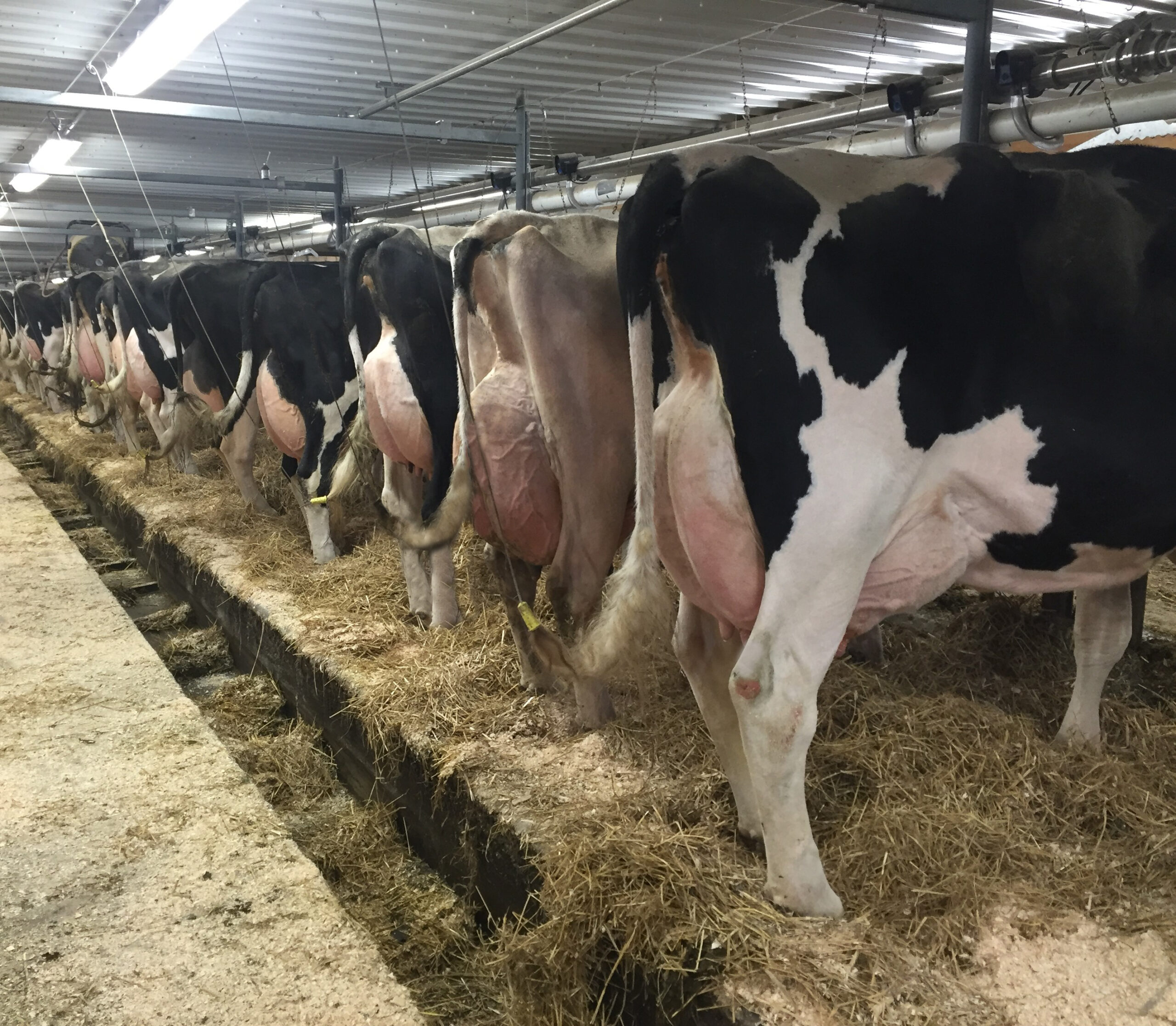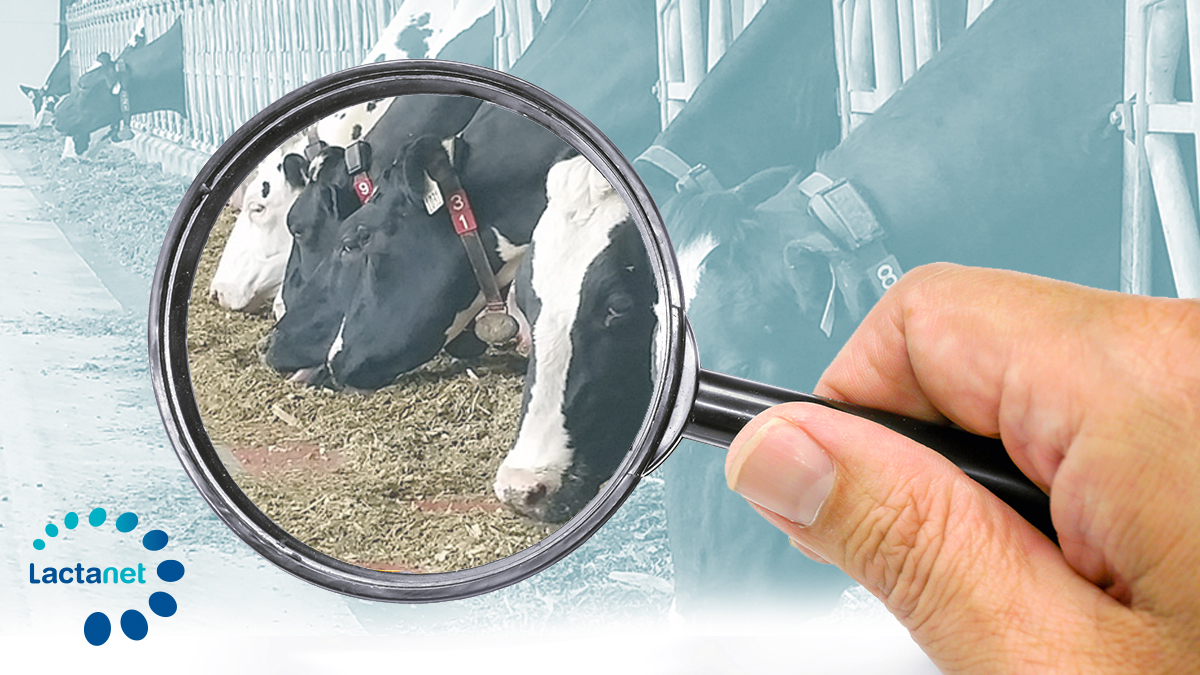Milk recording: making the most out of technologies
- 22 June 2020
Innovative technologies have never made the news so often in the dairy sector. New technologies go hand in hand with automated milking systems but also with a whole host of systems connected to control panels, sensors, and – coming soon – artificial intelligence. All these systems are aimed at increasing production efficiency, labour efficiency and cow comfort. Lactanet is working continually to develop services and tools that incorporate these new technologies to meet the ever-changing needs of Quebec dairy operations.

Data – Expertise – Solutions
Lactanet is investing in optimizing an expanding amount of dairy herd data by facilitating data transfer between software programs. In 2019, major improvements were made to Ori-Automate, the software that gathers data electronically from most milking software systems, in order to collect data from software connected to the cloud computing network.
The introduction of new types of reports and unique benchmarking opportunities promises to enhance the experience of using not only milk recording data but also milking systems on farms.
Measuring performance for better management through benchmarking
Dairy producers are used to gathering production data and using that information to make management and breeding decisions. Automated milking systems collect a wide array of herd data, including milk yield per milking and per cow.
Herd data becomes more meaningful, however, when it is used for in-depth analyses or for comparisons with other producers or with the industry as a whole. Benchmarking is effective in that it allows producers to measure their performance against that of the whole dairy sector. If you don’t know what the standard is, you can’t compare yourself to it. To remain competitive, you have to know where your operation stands in relation to others and know how you can go about improving it.
Those who attended the Zen & Profitable workshop held in Quebec participated in an eloquent demonstration of how benchmarking can be used to extract more information from herd data. Producers were able to compare their own milk recording data with provincial values to determine stress levels in their herds, quantify the economic impact of that stress on herd profitability, and identify potential solutions aimed at reducing it.
A new generation of milk recording reports: interactive reports
Milk recording reports in PDF format have served Lactanet clients well over the past 20 years. The new reports introduced recently by Lactanet are interactive, meaning that users can peruse their data by clicking on various tabs or herd variables and comparative analyses as needed.
The PROFILab report makes this new interactive consulting experience accessible to all dairy producers in Quebec. This report adds another tool to an interactive reporting system that includes the new Robot – Production and Efficiency report and the Hoof Health report introduced in 2019, both of which were developed with this same technology that allows interactive viewing.
The interactive reports consist of data files that are transmitted electronically. When the file is downloaded to a computer, the user can consult the data on screen through a web browser. A web connection is required to download the file, which can later be accessed offline on a computer screen, tablet or smartphone (iPhone/Android).
Work is underway to develop new interactive milk recording reports. Some of these will be available online, with more options for customizing the data display to suit the needs of each client. A team of developers at Lactanet is currently working on the visual aspect and will be consulting with users/clients.
Make the most of the technology with the new eDHI service
Lactanet is introducing a new electronic milk recording service called eDHI. The service allows remote access to herd data recorded in on-farm computer systems, without requiring a technician visit or milk sampling.
This new service is available to farms equipped with electronic milking and automatic animal identification systems (robotic and milking parlour systems). The herd averages for fat, protein, SCC and BCA in the milk recording reports are calculated from bulk tank milk data, but the service also offers the option of collecting sensor data to establish individual cow levels.
Producers who subscribe to electronic milk recording (eDHI) must meet certain requirements for the service, including keeping accurate records in the software and properly calibrating milking systems (quantities and milk components). The service offers all the benefits of milk recording, such as calculating the HPI, and makes it easier for service providers to access herd data. Finally, herds subscribing to this service will have access to a greater number of features in the new herd genetic management tool, Compass.
This is an exciting period of technological development for dairy producers. Lactanet is actively supporting the dairy industry to ensure the success of this transition, which is already well underway.











